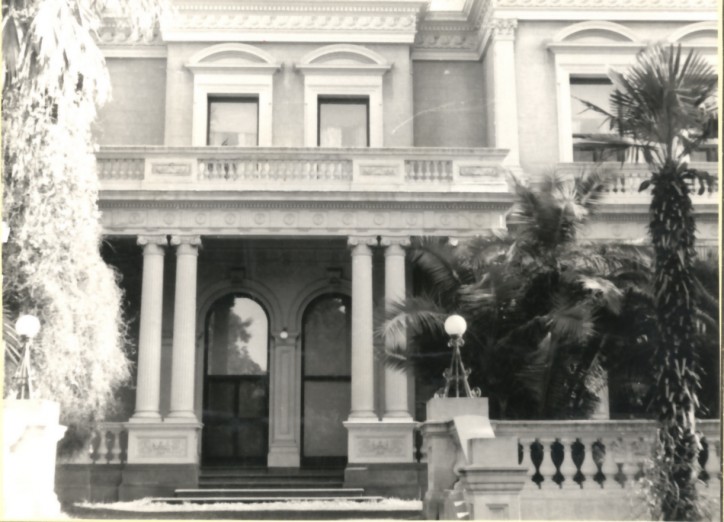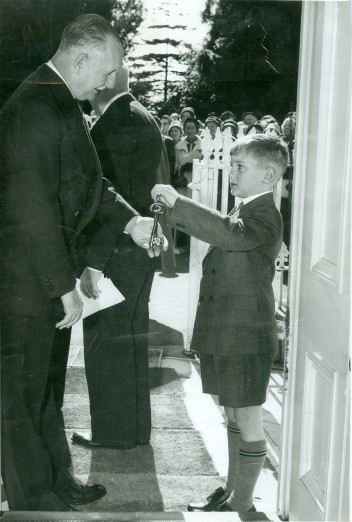Prompted in the early 1950s by the disappearance of grand mansions and terrace houses, Maie Casey (the indefatigable wife of federal politician and diplomat Richard Casey) initiated the publication of Early Melbourne Architecture in 1953. This was the first attempt to document Melbourne’s early architectural heritage and clearly state that there was something worth preserving. It sold out within a year.
Preservationists Get Organised
Growing concern over the demolition of prominent places galvanized some of Melbourne’s most influential figures to act.
Early Melbourne Architecture
Magnificent Mansions Falling
The imminent demolition of the Toorak mansion Werndew incited action.
In 1954 The Town & Country Planning Association, led by Kenneth Myer, decided that action needed to be taken to preserve historic buildings across Melbourne. Concurrently, the Director of the National Museum of Victoria, R.T.M. Pescott, called for the establishment in Victoria of a body similar to the National Trust in Great Britain.
Forming the Trust
A call is made to ‘create a society or trust for the preservation of historical and meritorious buildings in Victoria’.
Architect Robin Boyd published an article in the The Herald on 4 October 1955, announcing a meeting and was unanimously supported in a motion to form such a society. An inaugural meeting was attended by over 300 people and on 23 May 1956 the National Trust of Australia (Vic) was formally incorporated. It was clear that there was widespread community concern over the demolition of the city’s heritage buildings.
Deciding What Was Important
In just 3 years, 533 places were classified as worthy of preservation.
Before demolition could rob the city of any more heritage places, a comprehensive stocktake of what currently existed was undertaken. In 1956 the National Trust Council appointed a Survey and Identification Committee to survey heritage buildings and design a classification system. By 1959 the Committee had classified 533 places, but only 14 at the level ‘National importance’. The process of recognition was slow and some places were demolished even though classified, with at least 15 places in the CBD lost by 1961.
Preservation Action
Before heritage preservation legislation, the only secure way to preserve a place was to own it.
Accordingly in 1959 the Trust ensured the future of Como House through formal acquisition. The building became the centre of Trust operations by December of that year and membership had expanded to 1,750.










